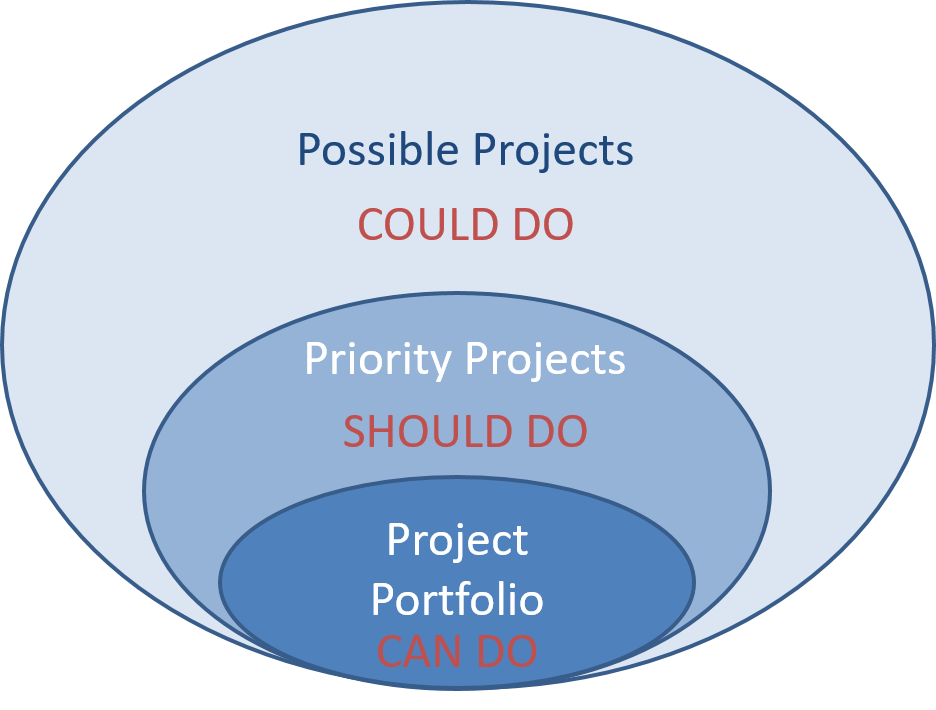Why projects are the key to bringing your strategy to life
Devising a strategy is an organisational journey. Like all journeys, it needs a destination. It requires that you set a course – or at least a direction – to take you toward that destination. To make the journey, you need to choose an appropriate vehicle – one that is suited to the terrain. Finally, for it to be an organisational journey, you need to mobilise your people to head off in search of that destination – and one of the most effective ways of doing this is through project prioritisation.

Plan versus reality – be prepared to respond to the terrain
To make the strategic journey, you need a roadmap. A strategic roadmap that turns strategic planning into strategic execution. A map that connects the vision to operational reality. A map that is accessible to your people in a way that allows them to use it as they traverse their daily world.
What makes the strategic journey unique is that it’s perpetual – you never actually reach your destination. It is a highly uncertain journey where the terrain is constantly shifting and there are more things outside of your control than within them. It is much more like an explorer’s journey through the wilderness than it is a highway trip. More and more it is a journey where following the familiar, well-trodden path can get you hopelessly lost before you even realise that you are off course.
For many businesses, it is more about describing the strategic journey than mapping it
For some businesses, strategic development is an annual off-site pilgrimage to establish the destination – the strategic goals. However, this often leaves the business with strategic initiatives that don’t go anywhere. They lack the operational substance to get translated into activity.
Some lay out a carefully conceived plan of investment and return – cause and effect – that will shape the coming three years of business growth and increased profitability. This deliberate strategic approach may or may not become an actionable plan – often they are more about the plan than the execution. In any case, they don’t effectively address the emergent challenges. They are too long-term and too static to effectively manage today’s highly dynamic business environment.
Many organisations see strategy as the responsibility of leadership. This results in an organisation that is disconnected from strategic intent – from organisational purpose. It also leaves the responsibility for strategic execution in the hands of busy executives whose bandwidth is consumed by urgent issues, stakeholder/shareholder interactions and ‘managing upwards’.
Projects are the perfect vehicle for today’s strategic journey
In the Tao Te Ching, Chinese philosopher Lao Tzu said a journey of a thousand miles begins with a single step. When talking about a strategic journey, strategic improvement projects are the most effective way to take those steps. Through these projects, and a project-mindset, we can take decisive action toward our strategic goals… one step at a time.
Improvement projects can take many forms:
- Course correction or creating an opportunity
- Major changes to the way you do business
- Incremental operational or process improvements
- Experiments – hypotheses that you want to test to see if they are an improvement opportunity.
Most importantly, they are short-duration, hard-hitting activities that can be carried out by a relatively small cross-functional team. They should be targeted on a single specific outcome that delivers strategic value – either on its own or as one phase in a longer program – rather than on low-value activities.
A project-based strategic roadmap allows you to affect the organisation at three levels
An effective strategic roadmap simultaneously improves and adapts the business in three important ways:
- It creates focused strategic activity. By selecting high priority strategic projects you drive improvement and create strategic progress. Completing projects enables further strategic development – merely starting a large number of strategic initiatives does not. Greater strategic clarity comes on the other side of action. This allows you to make ongoing, well-informed decisions about your strategic direction rather than simply pursuing a pre-determined strategic plan.
- You begin to make strategic execution part of your operational fabric. The discipline of developing and maintaining a strategic project portfolio allows you to build your project capability. You also make strategic activity a certain portion of your operational routine. Improvement projects are a ‘learn by doing’ activity and as this capability develops, your project outcomes move your business from improving to innovating.
- The environment for a high-performance culture is created. Projectifying strategic execution creates the environment where high-performance cultures flourish. It allows you to empower your people to shape their workplace and the business in a meaningful way. The project framework then gives them the ability to succeed at these improvement expectations and see strategic progress. This drives strategic bandwidth into the organisation that is greater than its leadership and provides the operational feedback mechanism that allows the business to thrive in any market condition or economic climate.
The five phases to developing a strategic execution roadmap
There are five phases to developing a roadmap for the journey that connects strategic business thinking to operational execution.
- Strategic modelling. Establish and understand your business’s operating model, your strategic focus areas and the objectives that you have for them. This modelling activity will explore the threats, opportunities and customer expectations that your strategy needs to address to enhance business value. On our metaphorical journey, strategic modelling should establish the destination you are seeking – it should create the beacon for directing all your strategic execution activities.
- Strategic mapping. In this phase we want to map the business’s strategic objectives to improvement opportunities. It is essentially responding to the statement ‘we could achieve that if we did this’. Improvement opportunities are the organisational qualities we want to create, improve or amplify – be they operational, product or customer service focused. Importantly, strategic mapping requires that you not allow your history and the current conditions to define what is possible – they should inform where improvement and opportunity exist but not limit your beliefs. If strategic modelling establishes the destination you are seeking, then strategic mapping does two things: 1) it sets out the initial waypoints to reach that destination, and 2) defines the specific approach to developing the rest of the roadmap.
-

Assess your projects on improvement potential
Strategic exploration. The next step in roadmap development is to begin surveying the business landscape to ensure that we set off in the best possible direction toward our strategic waypoints. The best way to explore the business terrain is through the identification of projects that will help to realise the improvement opportunities. The most effective strategic exploration is done with the people who know the most about the improvement opportunity being pursued – those that are closest to where the element of business value gets produced. The final, most important part, of strategic exploration is prioritising the projects that you have identified per their business value. Do this from a range of different perspectives: operational, organisational and customer-centric.
- Strategic execution. With an array of strategic improvement projects identified and prioritised, it is time to select your improvement project portfolio and ready them for execution. This means being clear about the objectives and outcomes for the project. A cross-functional project team should be selected and engaged to begin the project definition and planning activities. A framework for executing the project needs to be established so the project team are focused on producing exceptional outcomes (not developing project methodologies). Finally, the project and enabling activities need to be identified to provide the team with the support that they need to perform in a powerful way. In strategic roadmap terms, this is where we select and provision the teams that will lead the business on the initial leg of its strategic journey.
- Strategic roll-out. This is the final phase before the strategic journey begins in earnest. It’s important a journey should commence with fanfare, not in quiet stealth. The strategic roll-out phase is to ensure that execution gets underway with leadership behaviours that are congruent with strategic intent; the project teams are supported and enabled on the one hand but prepared and committed on the other. It is also the point at which the strategy should be powerfully communicated so that the entire organisation is accountable for its success.

The journey starts here – with ‘rest stops’ along the way to refresh and recalibrate
The strategic journey will shape the roadmap moving forward
Strategic roadmap development is only a precursor to setting out on your strategic journey – you haven’t actually hit the strategic trail as yet. As much as the roadmap is developed to inform the course on which you take your strategic journey, the journey itself will inform where you need to take the roadmap. Project successes and failures will help define your strategic priorities and the projects that should sit within your project portfolio. Outcomes from your strategic execution activities will shape your strategic intent and shift your strategic model. Your people will begin to see improvement opportunities that are worthy of significant strategic exploration.
The iterative and perpetual nature of an effective strategy means your projects should be regularly assessed and refreshed. Your strategy should be to go through a regular ‘reset’ to maintain relevance and re-energise aspiration. Your organisation should take the opportunity to reflect, celebrate and grow from your strategic progress.
Questions for consideration
- How might your organisation benefit from a clearer strategic roadmap?
- Are there links between your strategic intent and the business’s operational reality that could be shorn up?
- What can you do to make your people feel like they have a meaningful part to play in the plan, its execution and outcomes?








Hi there, You’ve done a fantastic job. I’ll certainly digg it and
individually recommend to my friends. I am sure they will be benefited from this site.